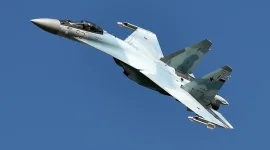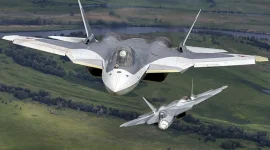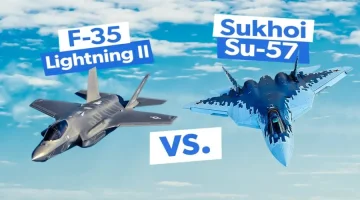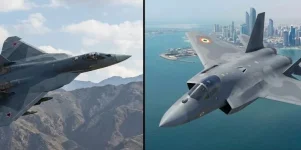- Views: 12K
- Replies: 85

India's pursuit of its own fifth-generation fighter jet, the Advanced Medium Combat Aircraft (AMCA), is a testament to the nation's growing defence ambitions. This indigenously designed aircraft promises cutting-edge capabilities like stealth technology, supercruise, and advanced weaponry.
However, the AMCA project faces potential delays, particularly in the development of a suitable engine, which could take six to seven years according to current estimates. This delay has opened a window of vulnerability for India as regional rivals China and Pakistan forge ahead with their own fifth-generation fighter programs.
China has already deployed the Chengdu J-20, and is actively developing other advanced fighter jets like the FC-31. Pakistan is also expected to acquire sophisticated fighter aircraft in collaboration with China. This evolving regional threat landscape has prompted India to re-evaluate its options and consider interim solutions to maintain its air superiority.
One potential solution gaining traction is the acquisition of Russia's Sukhoi Su-57 fighter jet. Initially, India had reservations about the Su-57 due to concerns about its engine and other technical aspects. However, recent upgrades, particularly the integration of the Izdelie 30 (A51) engine, have reportedly addressed many of these issues. This new engine significantly enhances the Su-57's thrust, fuel efficiency, and stealth capabilities.
The Su-57 boasts advanced radar-absorbent materials and a reduced radar cross-section, making it a formidable stealth aircraft. With these improvements and its full operational status within the Russian Aerospace Forces, the Su-57 is now viewed as a viable option to bridge the gap until the AMCA is ready for deployment.
Procuring the Su-57 offers several advantages for India. Firstly, it allows the Indian Air Force (IAF) to quickly acquire a fifth-generation fighter jet to counter the J-20 and other advanced threats. Secondly, the Su-57 shares similarities with India's existing fleet of Sukhoi Su-30MKI fighters, potentially easing the transition in terms of maintenance, logistics, and pilot training.
While the AMCA remains a crucial long-term goal for India's defense industry, the Su-57 presents a compelling stopgap solution. By acquiring the Su-57, India can ensure its air power remains robust and capable of addressing the evolving challenges in the region. This strategic move underscores India's commitment to maintaining its defense edge in a rapidly changing geopolitical environment.




